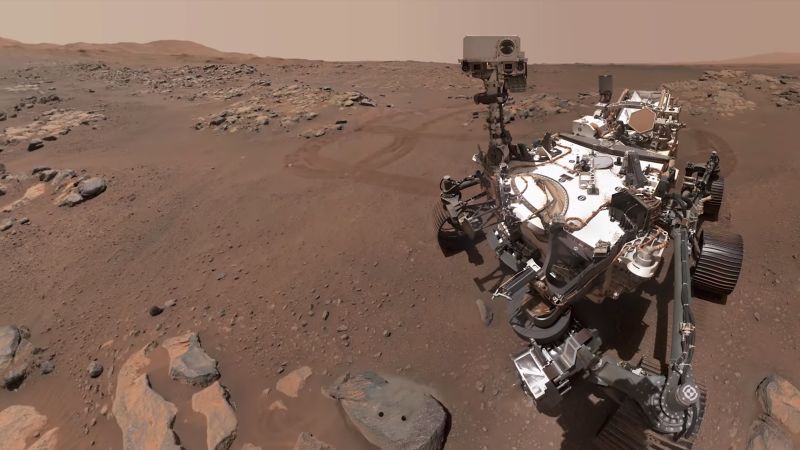NASA is actively pursuing new strategies for returning significant samples from Mars to Earth, aiming for a completion date in the 2030s. Recently, two innovative proposals have emerged as alternatives to the original Mars Sample Return program, which was a collaboration between NASA and the European Space Agency. This initial program was overshadowed by its complexity and projected costs, with estimates reaching as high as $11 billion. An independent review board assessed it, leading to an updated and delayed timeline for sample return that was pushed from 2031 to 2040, a delay deemed “simply unacceptable” by NASA Administrator Bill Nelson during a press conference.
The decision regarding the adoption of the new strategies will take place by the latter half of 2026, as Nelson indicated. This news conference underscored the urgency and importance of providing efficient solutions, as both proposals are intended to streamline the process while reducing costs and complexity. The Perseverance rover has been responsible for gathering Martian rocks and dust since its arrival on the red planet in February 2021. The rover collects valuable samples from Jezero Crater, a location of immense scientific interest, believed to be a relic of an ancient lake and river delta, and crucial to answering questions about past life on Mars.
However, bringing these samples back to Earth involves navigating a complicated landscape of technological and logistical hurdles. Both the original proposal and the newer ones revolve around deploying multiple spacecraft designed to land on Mars and transport the hard-won samples back to our planet. Last April, NASA launched an appeal to its various centers and industry partners, soliciting conceptual plans that would offer a more efficient, streamlined approach to returning these samples.
The discussions about new ideas were scrutinized by the Mars Sample Return Strategic Review team, which analyzed a total of eleven proposals and provided recommendations. The leadership at NASA further refined these ideas, keeping in mind the emphasis on practicality and fiscal responsibility. NASA’s Dr. Nicky Fox, associate administrator for the Science Mission Directorate, revealed in the presentation that the agency is considering two new landing strategies: one involves the same technology used for the Perseverance and Curiosity rovers, while the other looks to leverage capabilities from the commercial sector.
The first strategy is based on the sky crane method that has been pivotal in the successful landings of both previous rovers exploring Mars. The second strategy introduces commercial approaches, potentially using “heavy-lift vehicle” landers devised by private companies such as SpaceX and Blue Origin. Notably, Mars’s thin atmosphere presents substantial challenges for landing due to its inability to provide enough resistance to safely deploy a spacecraft. Thus, the designs must balance the need for heat shields while ensuring that parachute deployments are part of the strategy.
NASA’s current complexities are reminiscent of its past challenges during the landing of the car-sized Curiosity rover. Engineers innovatively developed the sky crane system, which secured the rover during the risky entry, descent, and landing phases. This method, proven effective during Curiosity’s deployment, was similarly applied to Perseverance, where the public even had the opportunity to witness the landing process through video capture.
Over the following year, NASA’s Jet Propulsion Laboratory in Pasadena, California will be key in testing both proposed landing options and addressing the associated engineering challenges. The new strategies could potentially facilitate sample return as early as 2035, at a cost significantly reduced to approximately $5.5 billion to $7.7 billion, compared to the earlier estimates.
With these alternatives, Nelson emphasized the distinct opportunity to enhance our understanding of Mars and, ultimately, our place in the universe. As this ambitious project unfolds, the incoming presidential administration will be responsible for budgetary considerations related to the mission, deciding on the continuation and adequate funding for the program. Although discussions about the new proposals have not yet occurred with Jared Isaacman, selected by Trump’s administration to lead NASA, Nelson contemplates the importance of providing multiple options in ensuring the continuity and effectiveness of the Mars Sample Return project.
Additionally, global competition in space exploration is rising, particularly from nations like China. The Chinese mission, Tianwen-3, is poised to launch in 2028, aiming towards the retrieval of Martian samples with a possible return to Earth by 2031. Nelson expressed concerns regarding the potential narrative if the only samples returned were from a Chinese mission, highlighting the detailed, methodical nature of NASA’s planned sample collections designed to yield crucial insights into Mars’s historical context, particularly relating to liquid water’s presence on the planet and the lingering question of extraterrestrial life.



